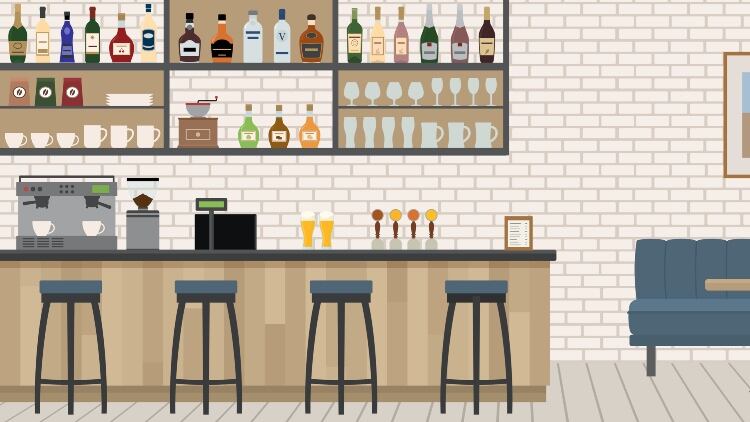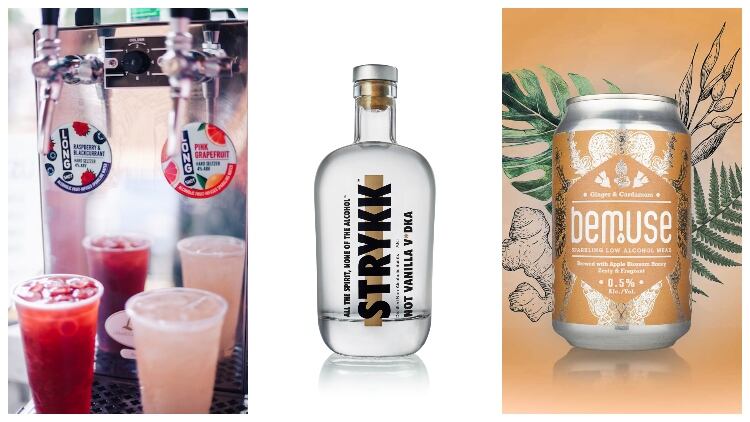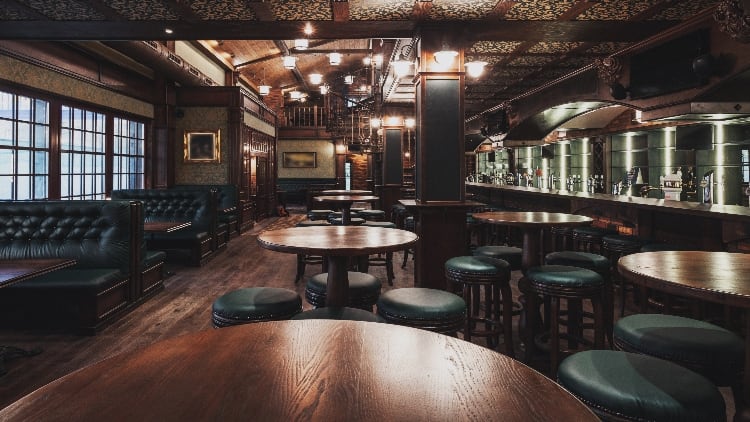Advertisement
With the right drinks range, encourage more customers to spend more, more often.

- Run a sports bar? Get the number one beer associated with sport[1]. Choose Heineken®.
- Busy local pub? When one in every two pints is classic lager[2] or cider[3], cater to more customers with a lager preferred by 60% more British men[4], and the #1 cider brand[5]. Choose Fosters, Strongbow Original and Strongbow Dark Fruit.
- Encourage your customers to trade up with premium 4% lager. Earn an extra £650 every week[6]. Choose Amstel.
- Run a stylish bar? Have a strong food offering? Give your customers the UK's fastest-growing beer brand[7]which matches perfectly with food. Choose Birra Moretti.
- Whatever your venue and whoever your customer, one-in-three are choosing to moderate[8]. Capitalise on the #1 No Alcohol brand[9], available in bottle or draught. Choose Heineken 0.0.
- Got a thriving pub garden? Serve sunshine lagers like Sol and Desperados and a strong cider offering. Benefit from the variety and popularity of flavoured cider with the fastest-growing cider brand over the last five years[10]. Choose Old Mout.
- Catering to a younger customer demographic? 18–34-year-olds prefer brands with an environmental commitment[11]. With all apples grown 40 miles from the mill, pick a sustainable draught cider. Choose Inch’s Apple Cider.
For full ranging advice tailored to your business, choose HEINEKEN UK.
[1] Toluna survey, October 2020, 18-64 beer drinkers
[2] CGA Strategy, February 2021
[3] CGA Strategy, 26 December 2020
[4] Kantar Category Everyday Beer MAT 2018
[5] CGA Volume Data MAT to 07.09.19
[6] CGA Volume Pool to February 2020 & CGA On Premise Measurement [P02 2020]
[7] CGA Strategy Oct 20 to GB Value MAT TY vs. 4YA
[8] Alcohol Change UK Survey 2020
[9] Nielsen MAT data to 11.07.20
[10] CGA Strategy, 26th December 2020
[11] YouGov 2021, CCS 2020
According to John Gemmell, Heineken UK on-trade category and commercial strategy director, while a number of broad – and potentially lucrative – trends have emerged in the on-trade over recent years, a pub’s offer should ultimately revolve around what goes on within its walls.
“The fundamental points to address first and foremost when constructing your range are who are your customers, for what occasions do they typically visit your business and are you catering to their needs and what does your outlet stand for and what is the atmosphere you are looking to create,” he says.
As such, Mark Bentley, on-trade category controller at Molson Coors Beverage Company – suggests a two-step approach to ranging.
“Firstly, outlets should identify the roles they need the drinks on their bar to fulfil, based on factors such as the type of outlet that that they are, the types of customers that they appeal to and the types of occasions that they cater for,” he explains.
“For example, a community pub which has a big focus on sport is likely to have very different range requirements to a destination food pub which appeals to families and older age groups.”
He adds that once these roles have been established, the second step is for operators to choose the best brand or brands.
“This can be through a combination of market performance data and on-the-ground feedback regarding which brands are best suited to their outlet in order to optimise sales.”
However, fundamentally, Bentley stresses that striking a balance is “absolutely key”.
“Making sure there are options for everyone, from familiar favourites to more premium options,” he says. “The right balance will vary depending on the type of outlet; for example, core mainstream lager is likely to be a big part of the sales mix in community pubs, especially those where sport is a key reason to visit. In contrast, it will be a much smaller percentage of sales in a food-led pub, but it could still have a key role to play as part of a balanced range.”
Mapping the lager landscape
Bentley warns pubs not to underestimate the importance of their core beer offer – despite noises being made about premium pours and highbrow brews post-lockdown.
“Prior to lockdown, core lager accounted for 45% of all draught lager sales value in Great Britain, representing five in every 10 pints of lager sold,” he explains.
“Even in more premium outlets, consumers expect options like Carling alongside a range of more premium options should continue to be a focus.”
What’s more, he adds that a national survey during lockdown found that cask ale was the beverage they were most looking forward to when pubs reopened for almost a quarter (23%) of respondents – more than any other drink.
“This demonstrates just how important it is in an outlet’s range,” he adds. “It offers pubgoers something they haven’t been able to replicate at home so we expect it to be in high demand over the next few months.”
Curating cider
According to Darryl Hinksman, head of business development at Westons, while any pub’s drinks offer should plant cider at its core, operators need to be wary of getting the balance between fruit flavoured and traditional pours depending on their clientele.
“On the bar, draught ciders should take priority, as these represent 52.7% of these serves,” he explains. “And, whilst apple continues to represent the lion’s share of draught cider serves (70%), the fast-growing fruit cider category remains an important consideration when deciding what to stock. In fact, fruit cider now accounts for almost a third of all draught cider sales in the on-trade (29.9%).
While adding that a well cultivated fruit cider offer can help drive footfall and attract non-traditional cider drinkers – “such as women and younger adults” – Hinksman adds that the category is also far more reactive to the seasons.
“Beyond this, premium fruit cider plays a key part in helping on-trade retailers drive trade-up, as consumers are increasingly looking towards draught fruit ciders for elevated drinks choices which are tricky to replicate at home,” he adds.
“As such, we’ve seen a 9p in the average price per print – up from £3.56 to £3.65 – offering retailers a significant opportunity to add value sales by maintaining availability of draught fruit offerings.”
Premium pints
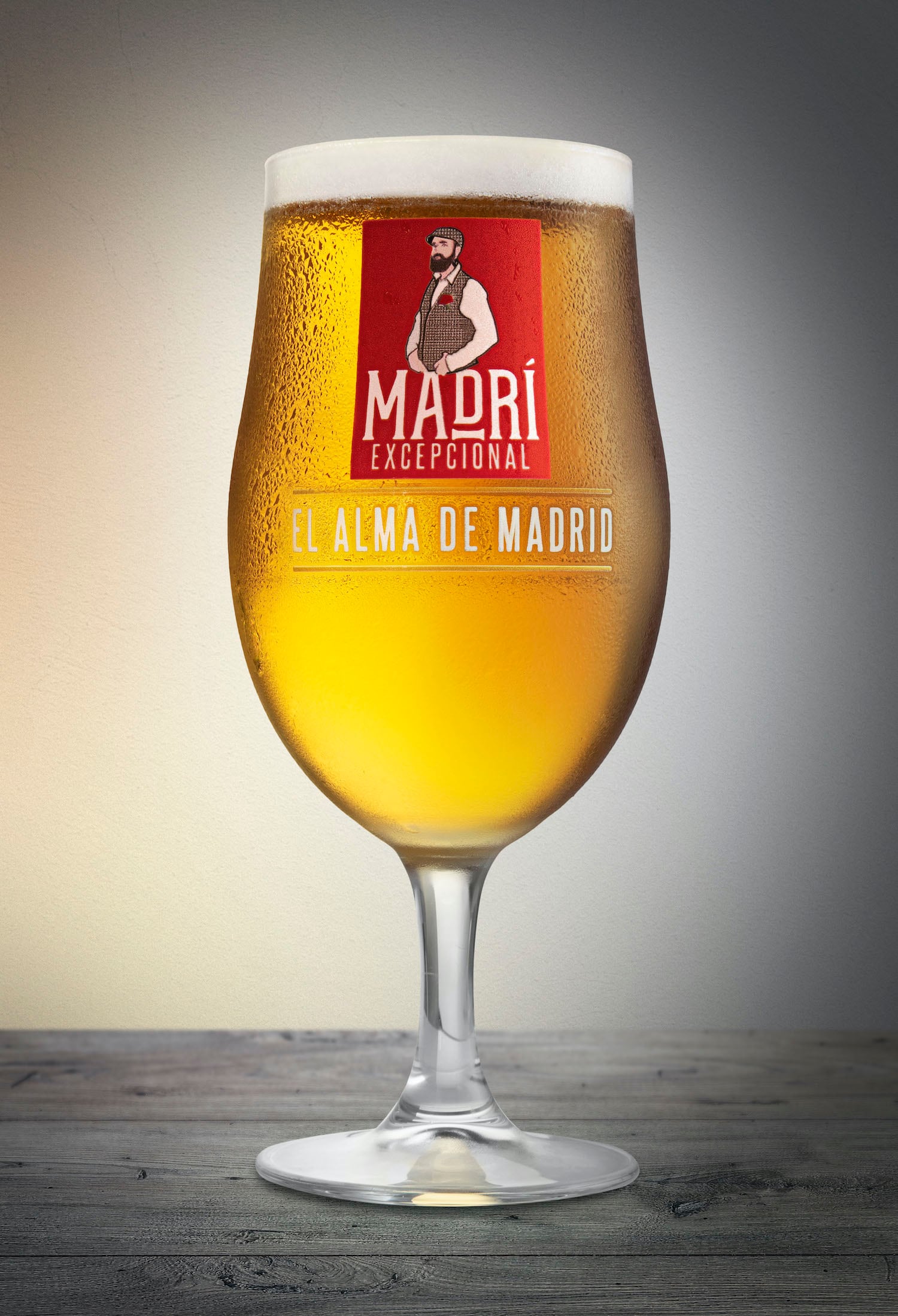
According to Mark Bentley, on-trade category controller at Molson Coors, premium pours’ already increased brand traction was kicked up a notch during the pandemic, with world beer and premium ale, for example, growing at a faster rate than their core categories in the off-trade.
“We expect this trend to extend into the on-trade as customers return to their favourite venues,” he explains. “World lagers are becoming more popular. Continental-style pilsners are also becoming increasingly popular, providing a more crisp and hoppy flavour than traditional lagers.”
This gravitation towards high end products is, naturally, driving growth in on-trade revenue according to Heineken UK’s on-trade category and commercial strategy director, John Gemmell, due to customers going out less but visiting more premium outlets and choosing more drinks with a higher price point.
“This trend shows no sign of slowing down and, if anything, has accelerated since reopening,” he says. “During lockdown periods, one fifth of consumers were regularly trading up to more premium brands when purchasing in the off-trade. Heineken consumer research revealed that 37% of people were planning to make their returning on-trade visits more special by choosing more premium drinks and food.”
As such Gemmell advises operators to try to have at least one or two premium brands for every type of drink they consider a go to choice in their pub.
“This gives your customers the opportunity to trade up, while earning you extra revenue,” he says. “In your fridge, put your best options on the top shelf as consumers look left to right and from top to bottom. Reserve this space for your most important drinks – those that make you the most margin or say the right things about your outlet.”
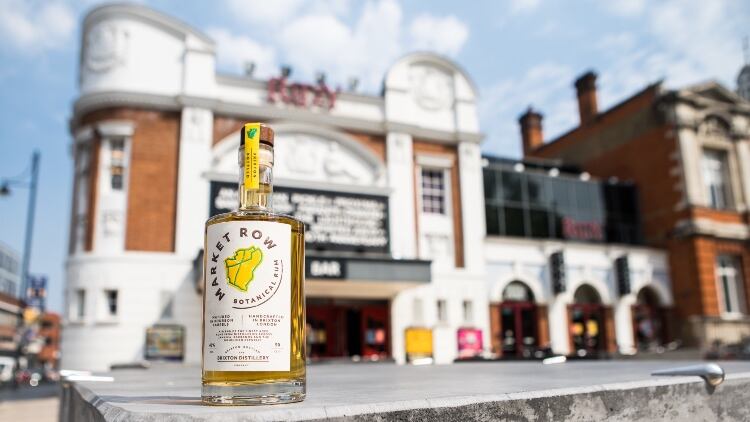
Getting in the spirit
While gin and vodka remain the best-selling back-bar staples, according to Patrick Venning, co-founder of The Brixton Distillery Company, rum is an “ongoing force in the on-trade” well worth throwing into the mix, with new variants offering cross-category appeal.
“People are particularly experimenting with new styles of high-quality ‘botanical’ spiced and flavoured rums, where the botanicals are slightly more interesting and a little less sweet,” he explains.
“Botanical rum is also appealing to gin lovers; opening up a new premium spirit for them to explore. The concept and use of botanicals are well understood by gin drinkers; they love the variety and excitement they offer.”
What’s more, Faith Holland – head of category development, on-trade, at Diageo adds that operators should consider potential cocktail opportunity when building a spirits offer.
“As cocktails are worth £624m in GB ( up 6.4% YoY) and are stocked in 43.5k outlets ( up 3.7% YoY) , there is a wealth of opportunity for operators to not only unlock sales, but also to create great experiences which people have missed. If operators are able to get the quality, service and choices correct, they will unlock a fantastic profit opportunity.”
As such, she says that when it comes to ingredients within cocktails, it is worth thinking about which liquids form the base of popular, high-quality serves to engage customers.
“Vodka, for example, is a popular spirit for cocktails and has a 41% share of all mixed spirits serves,” Holland says. “Passion Fruit Martini cocktails are one of the most popular amongst consumers with 16.8% of the mainstream cocktail market share in the on trade.”
Sustainable serves
According to Paul Robertson, head of on-premise at Coca-Cola Europacific Partners, one third of modern drinkers rank sustainability among their top three purchasing criteria.
“Living greener lifestyles is growing in importance for many post Covid – which means businesses must adapt and deliver,” he says.
“People are clearly thinking, shopping, and behaving differently, and many recognise emerging from coronavirus restrictions as an opportunity to accelerate progress on the sustainability agenda.
“Local pubs, bars and restaurants sit at the heart of their communities and enjoy unique relationships with their customers, meaning they are perfectly placed to engage people in environmental issues and encourage positive behaviour in the community, such as making sure packaging is properly recycled.”
John Gemmell, Heineken UK trade category and commercial strategy director has also seen consumers increasingly motivated by sustainability and making more eco-friendly, conscious choices across all aspects of their lives.
“Two thirds (66%) of consumers choose to purchase products or services based on their ‘environmental friendliness’, particularly among those aged 18-34,” he says. “It’s therefore now more important than ever for pubs and bars to offer drinks that align with their customers’ values.
“If sustainability or buying local are important to your customer demographic – particularly if your business is visited by a lot of younger adults – make sure you highlight this offering on menus, chalkboards, or at the bar to increase sales,” he adds. “Focus on taps, fridge doors – without blocking view of your packaged options – or in ‘hot spots’ on your back bar where your customers are looking.”
Low and no ‘a must stock feature’
According to Britvic’s director of leisure and licensed, Adam Russell, the coronavirus pandemic has boosted the nation’s commitment to health and wellness goals – with more careful food and drink choices, and the rise of low and no alcohol options, a symptom of a changing collective mindset.
“Alcohol moderation is one of the key measures being adopted, paving the way for alcohol alternatives,” he explains. “Consumers stated that when the trade fully reopened, they were intending to choose low and no alternatives over drinks containing alcohol – demonstrating the need for outlets to adapt.
“Just before the pandemic, the low and no alcohol category was reportedly worth £60m and growing 48% annually,” Russell adds. “This is expected to have accelerated further and a clear opportunity is forming, as currently 28% of consumers order tap water when they want a non-alcoholic option in pubs and restaurants.
“If 200 visitors visit a pub in a day, 56 people could be spending £3 to £5 on a low and no alternative. The missed sales could be as much as £100,000 or more per year for a pub.”
He adds that, based on the increase in UK adults looking for low and no alcohol alternatives, it is vital licensed operators take note and put plans in place to cater for this demand.
Tom Warner from Warner’s Distillery, concurs, adding: “There is no doubt in my mind that the trend for 0% alcohol alternatives, will continue to grow in line with the health and mindfulness movement.
“Fuelled by the younger generation, these guys deserve to be part of the drinking ritual and that requires a sophisticated drinking experience when at home or in the pub.
“The obligatory lime and soda or other soft drinks consumed since they were born are not good enough and the drinks industry needs to satisfy this need with authentic products people can believe in.”
Outlining the size of the low and no opportunity, Heineken’s John Gemmell explains that one-in-three UK adults are now moderating their alcohol intake and 65% proactively try to lead a healthier lifestyle, adding that at the start of 2020, the no and low alcohol sector was worth £94m in the UK – 0.6% share of total beer and cider.
“With health and moderation becoming increasingly prevalent in drinkers’ lives, no and low alternatives are becoming a must stock feature so health-conscious consumers feel part of the occasion,” he says.
Low and no sugar options to soften sales blow?
The licensed sector lost 449.3m litres of soft drink sales over the past year – the equivalent of around 180 Olympic swimming pools and approximately 80% more than the volume sales lost in foodservice, Britvic’s Adam Russell explains.
“According to the latest Britvic Soft Drinks Review, the soft drinks category in this sector delivered just 39.5% of the value sales and 39.4% of the volume sales achieved in 2019,” he adds.
However, the post-lockdown shift towards healthier options and premium pours can provide ample opportunity for a soft sell, according to Paul Robertson, head of on-premise at Coca-Cola Europacific Partners.
“Sparkling soft drinks enjoyed on their own can also offer a sophisticated, soft alternative to beer, wine, mixed drinks and cocktails,” he says.
“A recent survey revealed 58% of people think a crisp, refreshing taste is one of the most important aspects of an adult soft drink.
“They also appeal to increasingly health-conscious consumers, who are either looking to reduce their alcohol intake, or lead a healthier lifestyle in general.”
Robertson adds that, across the soft drinks category, he is also seeing increasing demand for low and no sugar options.
“In retail, much of the growth we’ve seen in the mixers category over the last year has come from light variants,” he adds. “We expect this trend to continue in the on-trade, with more than one-in-ten indicating that a slimline tonic would be their mixer of choice when ordering a drink.
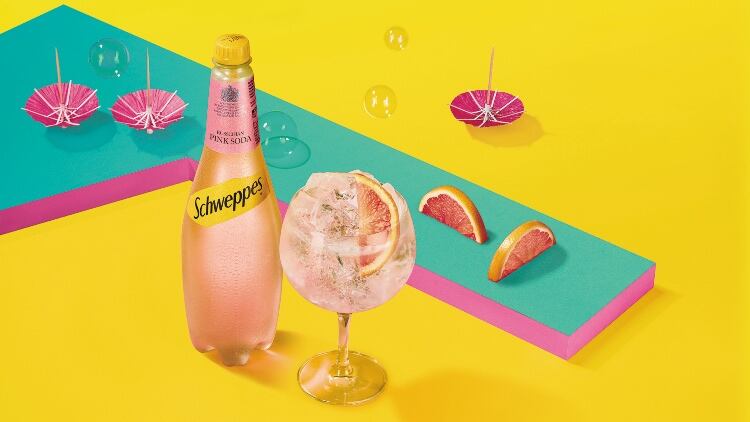
Just the tonic?
Robertson adds that traditional tonics and mixers play an important role in any operator’s line-up as spirits like gin continue to grow in popularity.
“The mixers category has enjoyed significant growth in grocery and convenience during the coronavirus pandemic as many people have developed a taste for mixed drinks in the home,” he explains.
“That’s why mixers will play a hugely important role in the hospitality channel in the months ahead; and why operators must focus on providing a perfect serve that consumers can’t replicate themselves.”
What’s more, Britvic’s Russell adds as reopening continues, mixers will have a renewed part to play as consumers look to elevate their out-of-home experiences.
“This was a trend gaining momentum prior to the pandemic, but after being confined to houses and gardens for socialising for some time, this has been accelerated. As a result, premium mixers now account for 42% of all mixers value, growing 20% year-on-year.
“Consumption of mixers on their own, rather than with spirits, is also growing and as guests seek new experiences, flavoured tonics have an important role, contributing to category growth and offering additional opportunities for solus consumption alongside mixed drinks,” he adds.
Top tips for building a drinks range
As well as maximising on current trends, John Gemmell, on-trade category and commercial strategy director at Heineken UK, flags six simple principles for building a core drinks range:
Less is more – “Limit your range to a maximum of five or six choices within each category – for example draught lager, packaged cider, cask – so your customers aren’t overwhelmed by too many options.”
Breadth not depth – “Aim to offer the greatest choice with the fewest possible lines, rather than going deep into one specific segment. For example, if you range Stella Artois and Kronenbourg 1664, this is using two lines for one consumer need – both are mainstream premium choices so would be considered by the same consumers on the same occasions. This is inefficient and, for draught, splits the potential volume which could compromise on quality. Pick one for your range and use the tap saved to offer something different.”
Focus on the favourites – “Despite the trend towards premium choices and experimentation such as in craft, three in five consumers like tried and trusted brands. Therefore, it is important not to forget the role that classic brands play within drinks ranges. More than half of all lager consumers drink classic lager and last year it accounted for 48% of all pints of lager poured. The same applies to other categories. For example, Gordons is still comfortably the most popular gin despite the explosion of craft brands. Since reopening, draught lager remains the most popular choice, with the reassuring quality of a well-known brand driving purchases. The strong growth in craft beer has stalled since reopening: in March 2020, craft accounted for around 6.2% of draught beer, but this has reduced to 5.6% as people go back to the familiar.”
Try for some trade up – “Consumers are buying into more premium choices , with 20% of people saying that they will now pay more for premium drinks . Although most consumers know roughly what they’re looking for when entering a bar, around half have not yet decided on the exact brand. Offering at least one or two more premium choices for every popular drink type in your outlet gives customers the chance to trade up if they wish, while earning you extra revenue.”
Draught and packaged are different – “Four-in-five consumers have already chosen the format of their drink before they arrive at the bar, such as draught or packaged, as format is intrinsic to the occasion. Eye-tracking research shows that a customer thinking of having a pint won’t pay attention to fridge range and vice versa – just like someone planning to drink a pint of cask ale doesn’t look at the wine list. The chance of switching a consumer from draught to packaged or packaged to draught is very small, as format is higher than brand in the decision-making hierarchy. This means that the ranges should be chosen independently of one another, so it’s perfectly acceptable for a popular brand to be stocked on the bar and in the fridge.
Everything in its place – “Your range needs to match your outlet type and customer base. Take a step back and evaluate whether it truly communicates what you want to convey about your business. Getting your range right is worth the time – satisfying the most customers across the most occasions will increase footfall and loyalty, meaning more money is spent in your venue.”

